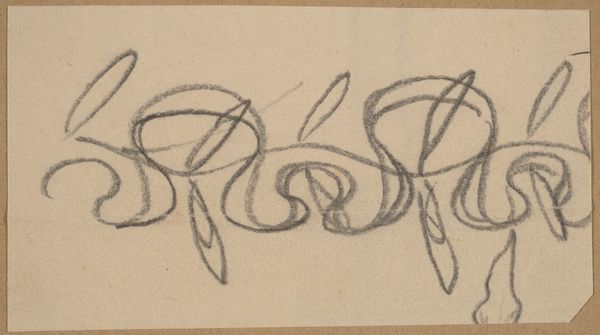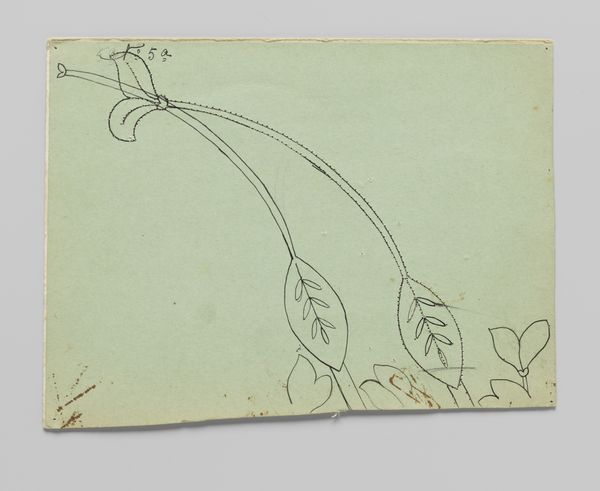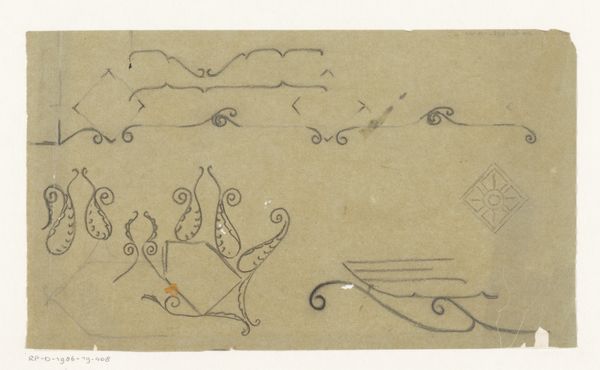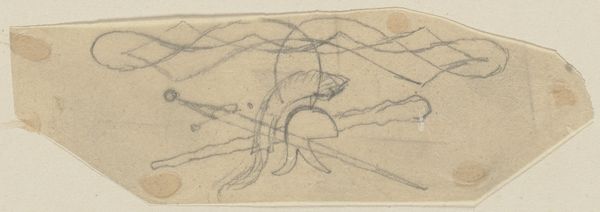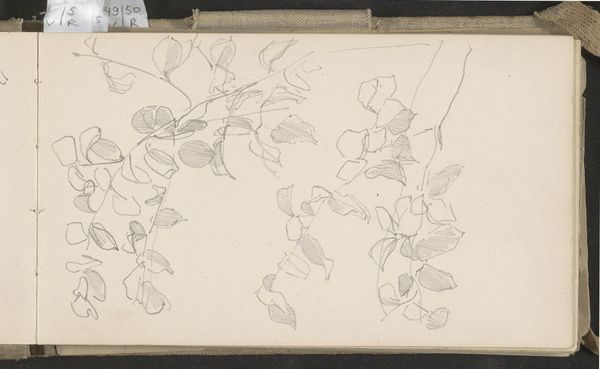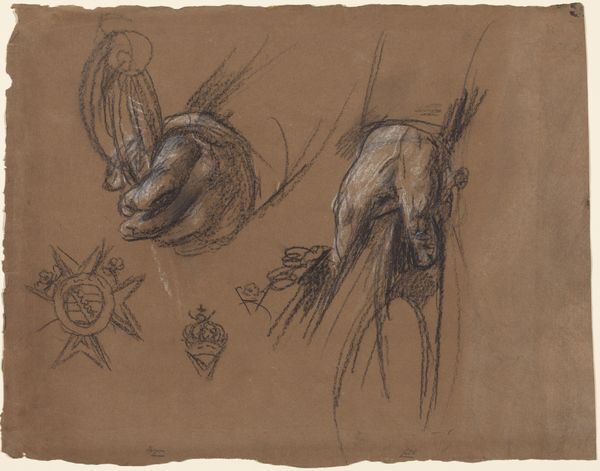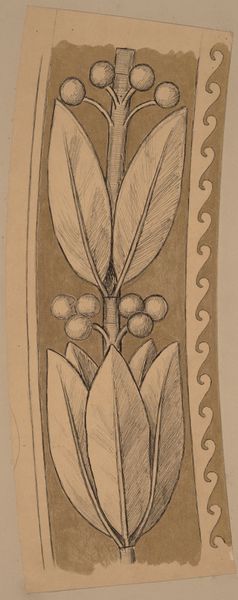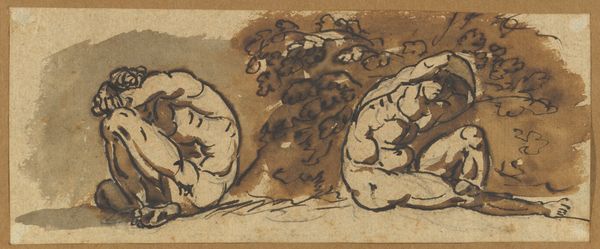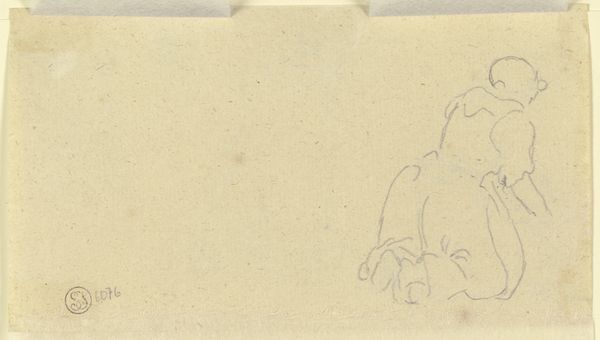
drawing, pencil
#
drawing
#
art-nouveau
#
geometric
#
pencil
#
line
Dimensions: sheet (irregular): 3.8 × 10.9 cm (1 1/2 × 4 5/16 in.) mount: 29.9 × 45.6 cm (11 3/4 × 17 15/16 in.)
Copyright: National Gallery of Art: CC0 1.0
Editor: This is Charles Sprague Pearce's "Study for a Border Design," created sometime between 1890 and 1897, a pencil drawing with an Art Nouveau feel. It's quite simple, almost like a doodle. What can you tell me about its structure? Curator: The first thing I notice is the emphasis on line. Look at the undulating horizontal line that dominates the composition. Note also how the artist uses the pencil to create texture, particularly in the clusters of what appears to be foliage or fruit, repeated along the border. It strikes me how the empty spaces interact with the drawn forms, generating rhythm. How does the composition guide your eye? Editor: It definitely moves from left to right, following that central wavy line, jumping between the bunches. The repetition creates a strong sense of pattern. Do you think the unfinished look affects how we perceive the artwork? Curator: The "unfinished look" actually provides insight into the artistic process itself. The exposed lines, the lack of shading, underscore the raw elements of shape and form. Instead of reading it as incomplete, consider it an exercise in the essential components of visual design. We are made aware of line and rhythm and of how these elements could inform, say, a larger, more ornate decorative work. Do you find the composition dynamic or static? Editor: Static, I think. It's very regular and evenly spaced. Although, the slightly different forms in each repeated cluster gives some visual variety. I hadn't thought about it being about the art making process, thanks! Curator: Indeed. It serves as a window into how the artist might deconstruct complex ornamentation into foundational geometric shapes and lines, and consider their relations to the whole. A good point to reflect on when appreciating not only form, but function.
Comments
No comments
Be the first to comment and join the conversation on the ultimate creative platform.

